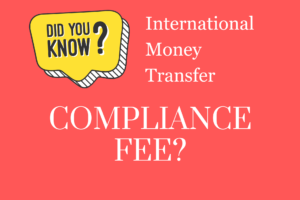A question, or rather a series of questions, that I frequently encounter is what should money services businesses or MTOs (money transfer operators), particularly those in the personal remittances space, do to increase their business and profitability in these challenging times? There are numerous ways to address this query, but I’ll discuss a few points that might help you understand the necessary actions.
Firstly, if you are a small institution or company—ranging from 10 to 25 employees, and notably under 10, which is considered very small—you face significant constraints in terms of technology adoption, learning, implementation, financial resources, exploring new business models, and discovering fresh avenues for generating business. It’s important to recognize that the remittances market is a $700 billion industry increasingly pressured by rising compliance costs, about which I could extensively elaborate.
However, the pressing issue here is the narrowing profit margins. This market is crowded with numerous competitors. What you might be overlooking is the business market, specifically the B2B sector, which currently amounts to $140 trillion. To give you some perspective, compare $700 billion with $140,000 billion.
There’s a vast difference between these two markets, and the profit margins in B2B are quite substantial. They are not merely 4 or 5 percent but can range from 10 basis points to 50 basis points, depending on the market.
Instead of focusing solely on smaller transactions typical in the person-to-person space, such as $500, $1,000, $1,200, or $800, consider how a B2B transaction typically involves larger amounts like $20,000, $50,000, or $100,000. B2B transactions are generally easier to manage in terms of banking and involve lower risk.
If you are not considering the B2B market, you are missing out. You might need to shift part or all of your business towards the B2B sector. There is substantial evidence showing that many institutions that started as remittance companies have successfully transitioned into the B2B space, either by transforming their business models or by creating or acquiring other companies.
Why? Because the person-to-person model is no longer sufficient. You need a more robust foundation, and B2B payments provide that essential lifeline. Next, let’s talk about technology.
Your ability to grow is highly dependent on technology—APIs, enhanced dashboards, better systems, etc. Many companies provide such technologies.
Shout out to RemitOne. I have no affiliations with them, but they offer excellent software. Besides RemitOne, numerous other providers have emerged, offering impressive systems.
More and more tech companies are coming forward, saying they have previously built B2B systems, aggregators, and origination systems. With the advent of Web 3.0, decentralized platforms, and the mix of cryptocurrency and fiat, even more, advanced systems are becoming available. Investigate these technologies as they can offer low ownership costs on a per-transaction basis, which might otherwise be unaffordable.
Another critical aspect is forming alliances. How you can develop a stronger partner network, extend your partner outreach, and gain access to parallel and better settlement networks, faster networks, and networks that support real-time processing or least cost routing (LCR). Having these options allows you to operate more efficiently.
Currently, the choices are very limited, and because of this limitation, you’re operating in a very siloed environment, which restricts your ability to grow. Now, onto crypto. Whether you like it or not, crypto is a reality.
And crypto doesn’t just mean Bitcoin, XRP, XLM, or Solana’s SOL. Here, crypto means primarily stablecoins. If you don’t understand stablecoins and the L1s (layer 1 blockchains) where stablecoins can run and transact very quickly, you’re missing out.
Stablecoins are likely to be one of the largest drivers of internet commerce as an alternative to traditional fiat. They are already facilitating numerous transactions because they are fast, traceable, reliable, widely accepted, and easy to set up. Currently, there are approximately $120 billion worth of stablecoins in circulation, with major players like Tether and Circle managing significant portions of this market.
Understanding how to participate with stablecoins and collaborating with specialized companies is essential. For instance, Braille is excellent for stablecoin dealings, and ARF is beneficial for engaging in the P2P space using stablecoins for collateral-free pre-funding and faster transactions. ARF recently merged with Huma Finance, which is also doing great work.
Stablecoins necessitate a thorough understanding of more complex fund flows. The problem with most of the executives I talk to, including some very knowledgeable ones, is their apprehension towards complex flow diagrams involving crypto and other blockchains, even though these operations are completely protected and regulated under their licenses.
Most of these CXOs (Chief Executive Officers), Commercial Officers, Revenue Officers, Compliance Officers, are either hindered, intimidated, dubious, or not fully convinced when faced with such systems because they do not fully understand how these systems operate and are not dedicating the necessary time and effort to learn.
This situation leaves many companies vulnerable because they refuse to invest the time, money, learning, and patience required to understand how a hybrid system of stablecoins, crypto, and fiat works.
What part should be handled by fiat? How will my banks view this from a risk perspective? How will I ensure safety and not lose banking access or jeopardize my company by supporting a crypto transaction? How can all this be legal? How will my audits be affected? How will external and third-party auditors view this? All these questions require an understanding of how the financial ecosystem works.
We have the traditional fiat rails and the new, hypersonic crypto rails, along with various on-ramps, off-ramps, and exchange points where traffic can meet all safety and regulatory requirements.
By not considering these aspects, we miss significant opportunities. So, technology, flow of funds, B2B, and crypto are crucial elements. And with this, it’s important to recognize that there is ample business out there for those who are prepared.
For example, companies like ours are eager to give business, but only to those who understand it, who can speak the language fluently. We shouldn’t have to worry about having to explain things. When we present a diagram or a risk assessment statement, you should immediately grasp it and be eager for more business. If we have to babysit you or if others have to, then it’s not going to work.
There’s more business out there than you can probably handle, but it all requires that you are up-to-date and able to execute on demand. This means you must start investing in this knowledge and capabilities today. If you would like to learn more about how to do this, please visit my website at www.faisalkhan.com, go to the contact page, fill out a form, and get in touch with me. I’ll be happy to guide you.
There’s no reason to feel distressed or pessimistic about the future. On the contrary, there are many reasons to be optimistic. You just need to take the right steps. I hope this helps.
—
This page was last updated on April 26, 2024.
–




